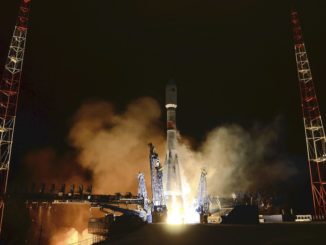
A Chinese Long March 3B rocket deployed the Tiantong 1-03 satellite to provide mobile communications services after a successful launch Tuesday, the first of more than 40 Chinese space missions set for liftoff in 2021.
The 184-foot-tall (56-meter) Long March 3B rocket lifted off from the Xichang launch base at 11:25 a.m. EST (1625 GMT) Tuesday with the third satellite in the Tiantong 1 communications network, joining two others launched in 2016 and 2020, according to the China Aerospace Science and Technology Corp., known as CASC, the primary state-owned contractor for the Chinese space program.
After shedding its four strap-on liquid-fueled boosters, core stage, and a second stage in the first few minutes of the flight, the Long March 3B’s hydrogen-fueled upper stage delivered the Tiantong 1-03 satellite to an on-target geostationary transfer orbit ranging between 113 miles (182 kilometers) and 22,254 miles (35,815 kilometers) in altitude.
The spacecraft separated from the launcher’s upper stage, and was expected to begin a series of orbit-raising maneuvers to reach a circular orbit more than 22,000 miles over the equator. Before providing communications services, the satellite will unfurl a giant antenna that will allow it to link up with users equipped with handheld terminals.

The Tiantong network is designed for S-band mobile communications services. Chinese officials said the new satellite will be used with the Tiangong 1-01 and Tiantong 1-02 satellites already in orbit, and the network will provide coverage across the Asia-Pacific region, the Middle East, and parts of Africa.
The fleet will provide “all-weather, all-time, stable, and reliable mobile communications services such as voice, short message, and data,” according to a CASC statement.
The launch was the first of more than 40 space missions scheduled for liftoff from China this year, including the first element of a Chinese space station in the next few months, followed by the launch of a supply ship to the complex, and the flight of the first astronauts to the outpost before the end of 2021.
Two more space station modules will be added in 2022 to complete the initial assembly of the orbiting complex.
Email the author.
Follow Stephen Clark on Twitter: @StephenClark1.



